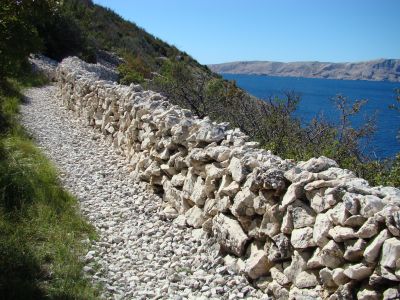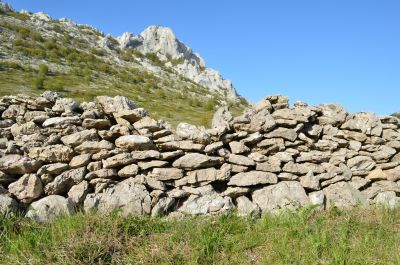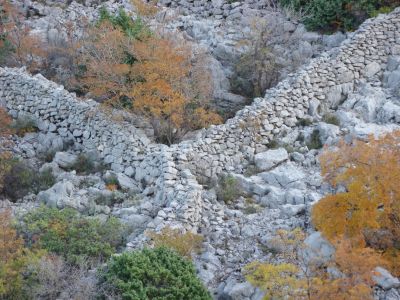The art of dry-stone construction (building “dry,” without mortar) is the practice of constructing walls using stone without any binding material, widespread across the Adriatic-Dinaric karst region. For much of history, dry-stone construction was virtually the only available building technique. Mastery of “dry” walling was one of the fundamental prerequisites for human survival in these rocky landscapes.
This technique was used to build the walls of stone houses, as well as to enclose fields, pastures, meadows, and olive groves, and to construct wells and pathways. Dry-stone walls are natural enclosures, perfectly blending with the landscape from which the stone was sourced. They often serve as barriers that prevent erosion and landslides, act as natural boundaries between properties, provide habitat for many animal species, and frequently serve as enclosures for livestock.
This skill has been employed in the Adriatic-Dinaric area of Croatia since prehistoric times and continues to the present day.
On the barren karst, dry-stone walling is an irreplaceable manual technique for building shelters, pathways, and barriers, and especially for adapting rocky terrain to agriculture. Most construction generally takes place in the initial and most labor-intensive phases of claiming new land: constructing enclosures, clearing stones from fields, creating terraces, and building simple stone shelters for temporary residence. In later phases, this skill is used for maintenance and repair of structures, storage of surplus stone unearthed during cultivation, functional adaptations, and similar purposes.
The art of dry-stone construction was entered into the Register of Cultural Goods of the Republic of Croatia in 2013, and in 2018 it was inscribed on UNESCO’s Representative List of the Intangible Cultural Heritage of Humanity.




